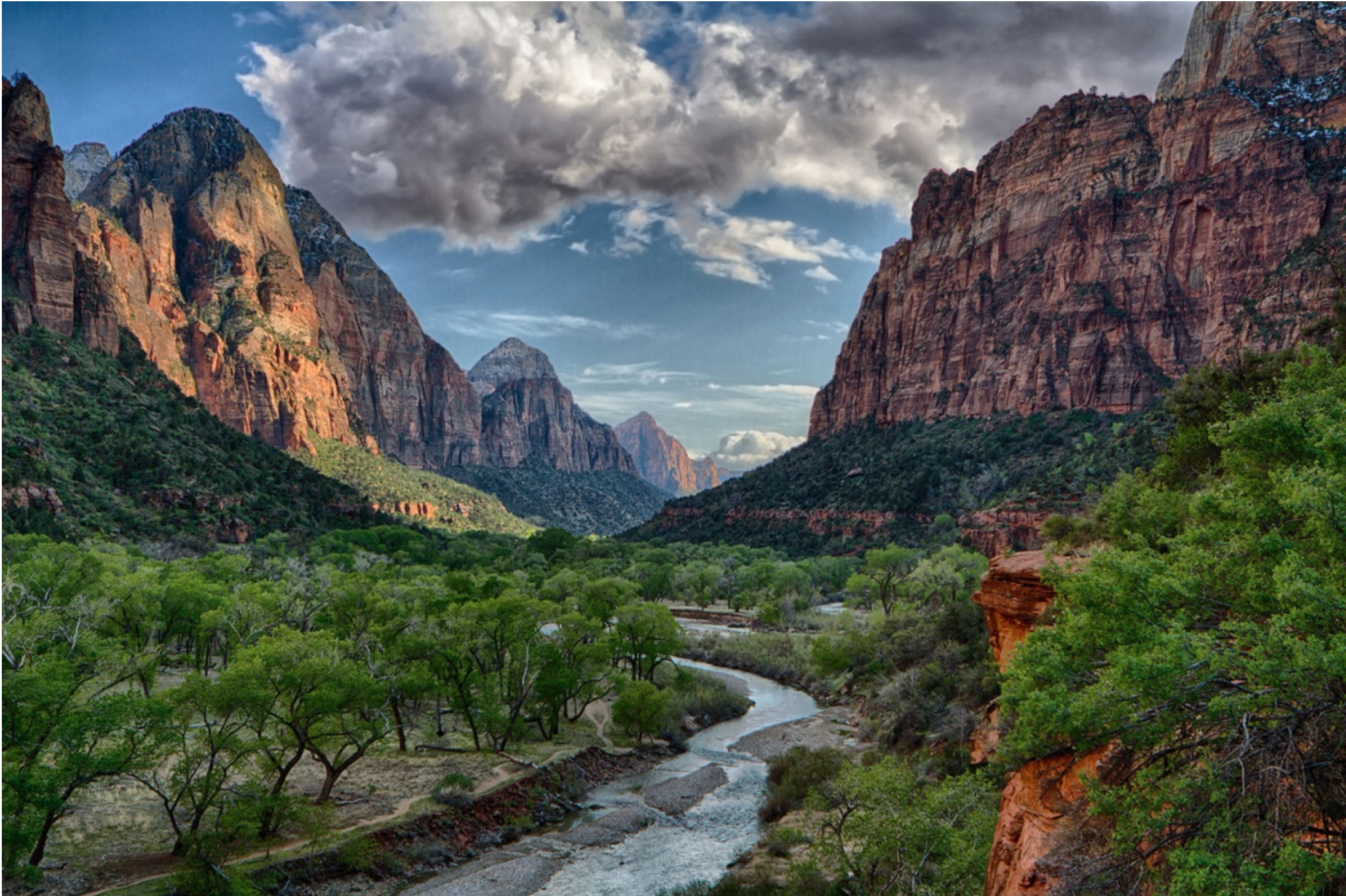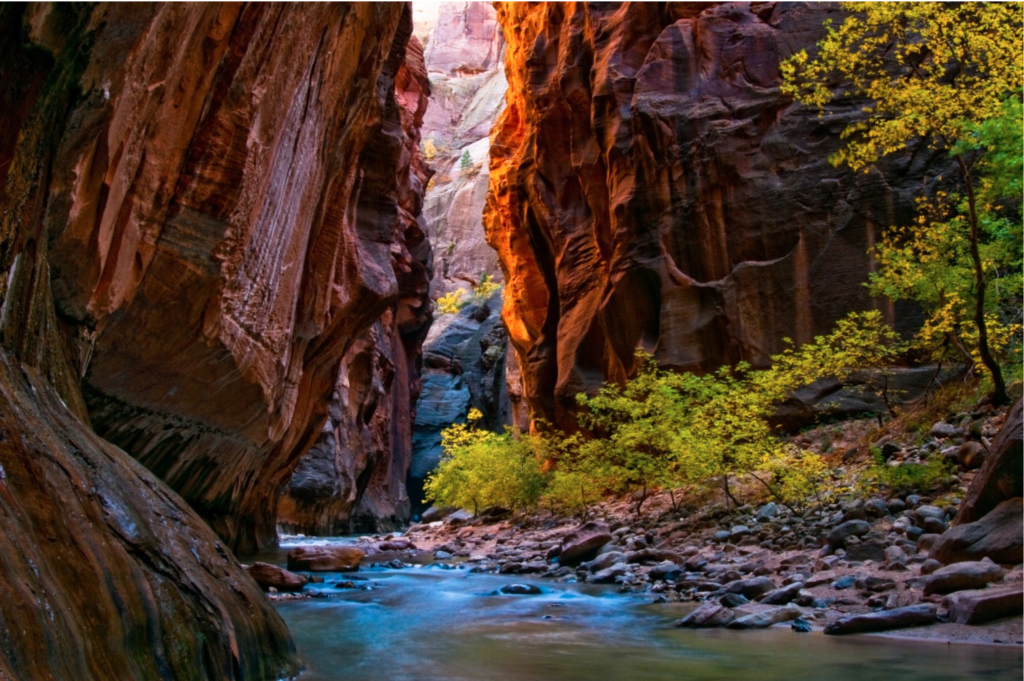For members of The Church of Jesus Christ of Latter-day Saints, particularly those raised in Utah, the word “Zion” automatically conjures up a dual image. Zion National Park is where many of us grew up going with our families, scampering across the red rock and bathing in the desert beauty. My family, for instance, clambered into the car and drove down from Salt Lake City together, squabbling and playing as we went. There we found a treasure trove – camouflaged lizards and the profound stillness of the red rock country. I don’t know anyone immune to its beauty.

Zion and Zion
However, “Zion” also raises another deep-rooted idea in us. Zion is the dream of a kingdom on earth – a holy land, our own sacred utopia. This lovely Deseret was understood by the early pioneers as a cultivated paradise, a land of milk and honey, abundant enough to provide as they grew their families and their faith. The early settlers’ efforts and the subsequent efforts of generations made the desert blossom.
But now both our Zions are faltering. In the worst drought in the last 1,000 years, our reservoirs are receding to look more like ponds. Our wildlife is desperate and our land can not perform all the tasks we ask of it. Zion National Park is also suffering. This summer Zion National Park is experiencing toxic algae blooms, a bacterial invasion that poisons everything it comes into contact with, made worse by the drought and high temperatures.
Our Zion is hurting. I believe our faith can provide us with insights that show a way forward. LDS doctrine teaches that we came to earth to learn, to gain knowledge. Indeed, Doctrine and Covenants tells us to seek and accept knowledge, not just from within our community, but good knowledge from the vastness of the earth: “Of things both in heaven and in the earth, and under the earth; things which have been, things which are, things which must shortly come to pass; things which are at home, things which are abroad…”(D&C 88:79, Church of Jesus Christ of Latter-day Saints).
The science to help mitigate this degradation is here, and now it is time to use it. I am inhabiting this body and this planet, and the knowledge I have gained here makes me feel confident in our need to act on the science available to us. Our faith tells us not to passively accept all knowledge, but only accept into ourselves the good. The 13th Article of Faith provides guidance on this matter: “We believe in… doing good to all men… We believe all things, we hope all things, we have endured many things, and hope to be able to endure all things. If there is anything virtuous, lovely, or of good report or praiseworthy, we seek after these things” (Pearl of Great Price, Church of Jesus Christ of Latter-day Saints, 60). Climate science can be thought of this way; as wise, virtuous, and doing good to all men. It aims to save our planet and ourselves from the ravages of self-inflicted environmental harm.
Our faith can guide us in our search for the truth and the good. As George Handley writes in his book Home Waters, “Science is our best source of information, but we all know it is insufficient. We wouldn’t act on science without faith, faith that acting self-consciously and according to good principle even with incomplete knowledge is still the right thing to do. This is not what it means to dismiss science in the interest of religious dogma. It is to admit that we act on the basis of what we think we know, knowing also that we take human, moral risk. Better to discover our humanity in the effort of restoration than to insist on a humanity defined by its deafness to the cries in the wilderness” (Home Waters, 120). Zion is in our care – both our ancestors’ dream and the beautiful national park; only our faith and science, working together, can keep it alive and healthy. There is no longer a dispute: we need to move forward in hope with the scientific knowledge we have. Our faith does not contradict this, but in fact, leads the way.
